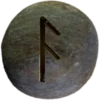Last Updated on December 3, 2024
Table of Contents


The Drykkjarhorn, known as the Norse drinking horn, held deep significance in ancient feasting culture. Made from animal horns, typically those of cattle, these vessels ranged from simple to ornate. They served as practical items for drinking and as symbols of status, honor, and community. They were often elaborately decorated with carvings, precious metals, or gemstones.
Drykkjarhorns feature prominently in gatherings like feasts, ceremonies, and solemn rituals. They embodied communal bonding and celebrations of kinship. The sharing of mead or ale from a single Drykkjarhorn fostered unity among participants. Such gatherings often involved sumbel—a structured ritual of toasting to gods, ancestors, or personal vows. During these moments, the Drykkjarhorn acted as more than a vessel. It became a focal point for sacred and celebratory intent.
Sagas and historical texts, including the Hávamál (The Words of Odin), reference the cultural role of drinking horns. Kings, warriors, and leaders were often depicted holding intricately designed horns, symbolizing their power or accomplishments. Horns of particular value could signify the holder’s prestige, with the quality of the horn often reflecting their social rank.
The materials and craftsmanship of Drykkjarhorns varied. High-status individuals used gilded or silver-inlaid horns, while simpler versions served the common folk. Excavations of Viking burial sites have uncovered richly adorned examples, showing how Drykkjarhorns were considered valuable even in death. Some were engraved with knotwork or runes, adding layers of meaning or protection to their use.
The Drykkjarhorn is an enduring artifact of ancient life, representing tradition, craftsmanship, and shared identity. Its place at the center of communal rituals highlights its importance as both a practical and symbolic object.
Runes Associated with the Drykkjarhorn
The Ansuz rune symbolizes divine communication and wisdom, often invoked during toasts to gods or ancestors. Its energy embodies the sacred words spoken during sumbel. The Gebō rune represents the gift of fellowship and unity created when sharing a horn. Together, these Elder Futhark runes ![]() illustrate the spiritual and communal aspects of the drinking horn.
illustrate the spiritual and communal aspects of the drinking horn.
Importance to Asatruar
For Asatruar, the Drykkjarhorn symbolizes community, reverence, and celebration. Its role in rituals like sumbel fosters connections to gods and ancestors. Sharing mead from a horn reinforces kinship and reminds participants of the bonds tying them to their heritage. The drinking horn remains a cherished object in modern gatherings, blending tradition with the sacred act of communal honor.

